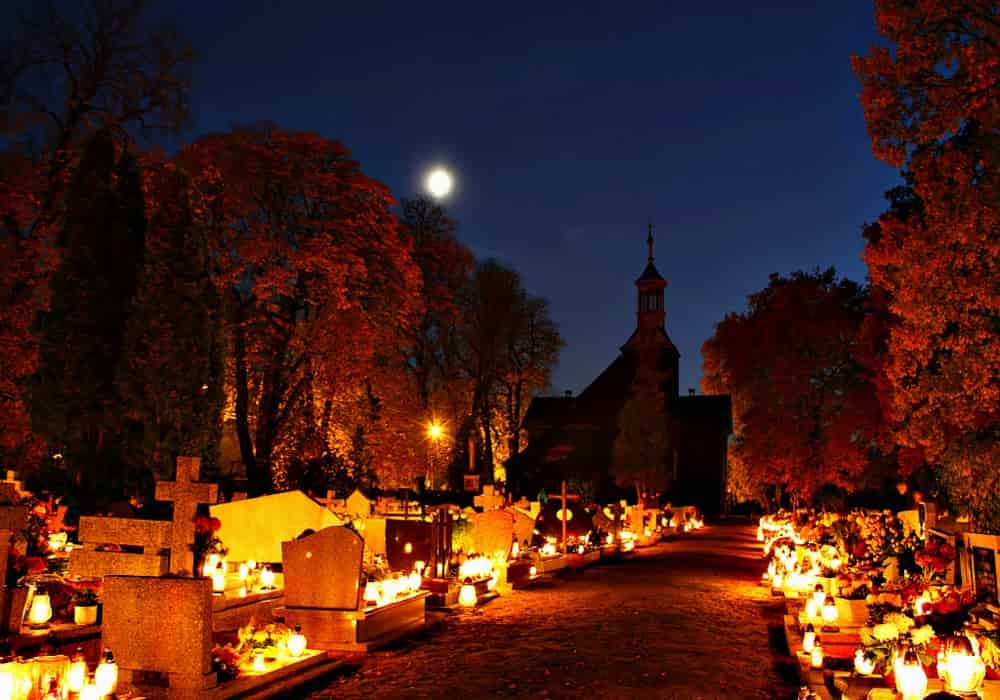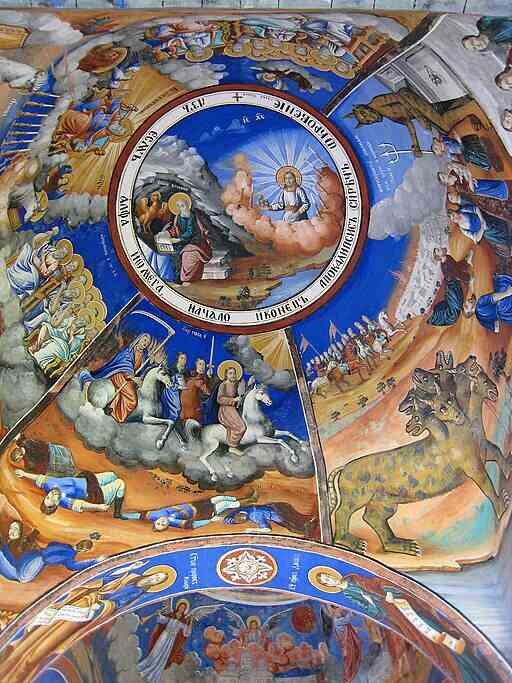All Saints Day
All Saints Day is a Catholic holiday, celebrated on November 1, during which the Catholic Church honors all saints, known and unknown; which honors all saints of the church deemed to have attained heaven.
The liturgical celebration begins at Vespers on the evening of October 31 and ends at the end of November 1. It precedes by one day the Commemoration of the All Souls Day, the solemnity of which has been officially set for November 2.
All Saints’ Day, also called All Hallows’ Day, Hallowmas, or Feast of All Saints (A hallow was a saint or holy person).
Protestants do not worship saints, but some Lutheran churches nevertheless celebrate this holiday. The Orthodox Churches as well as the Eastern Catholic Churches of the Byzantine rite continue to celebrate All Saints Sunday, the Sunday following Pentecost.
In Western Christian theology, this day commemorates all those who have achieved the beatific vision of heaven. All Saints’ Day is a national holiday in countries where the population is historically predominantly Catholic. In the Catholic Church and many groups of the Anglican Church, the following day is a special reminder of those of the faith who have died but have not been purified and have not yet entered heaven. Christians who celebrate All Saints’ Day do so on the basis of the belief that there is a spiritual bond of prayer between people who are in purgatory (Ecclesia Penitens), people who are in heaven (Ecclesia Triumphans), and people who are still alive (Ecclesia Militans). Various Christian traditions define, remember, and treat saints differently. For example in the Methodist Church, the term “saints” refers to all Christians, and therefore All Saints’ Day is a day to honor and remember the Church universally, including those of local church members who have passed away.
Read also: Catholic Saints | Saint Names, Patrons and Feasts
All Saints Day on November 1st
The current date of November 1 was instituted by Pope Gregory III (731-741), when he consecrated a chapel to all the martyrs in Saint Peter’s Basilica in Rome.
Gregory ordered his priests to celebrate the Feast of All Saints annually. This celebration was originally confined to the diocese of Rome, but Pope Gregory IV (827-844) extended the feast to the entire Church and ordered it to be celebrated on November 1.
History All Saints Day
Martyrs’ feasts
Feasts honoring all martyrs existed from the fourth century in the Eastern Churches on the Sunday after Pentecost. Today, it is still on this date that the Communion of Orthodox Churches celebrates All Saints Sunday. In Rome, also in the fifth century, a feast in honor of saints and martyrs was already celebrated on the Sunday after Pentecost.
After the transformation of the Pantheon in Rome into a sanctuary, Pope Boniface IV consecrated it, on May 13, 610, under the name of the Church of Sainte-Marie-et-des-Martyrs. Boniface IV wanted to remember all the Christian martyrs whose bodies were honored in this sanctuary. The feast of All Saints was then celebrated on May 13, the anniversary date of the dedication of this church dedicated to the martyrs, perhaps also in reference to a feast celebrated by the Church of Syria in the fourth century. It replaced the festival of Lemuria in ancient Rome celebrated on that date to ward off evil specters.
Date of celebration
Solemnity of All Saints, in the Graduale simplex
The celebration of the Christian feast of All Saints on November 1 is a Catholic specificity that appeared in the West in the 7th century. Indeed, it is perhaps from this period that it is celebrated on November 1, when Pope Gregory III dedicates a chapel in Saint Peter’s Basilica in Rome to all the saints.
Around 835, Pope Gregory IV ordered that this feast be celebrated throughout Christendom. For some historians, it is on the occasion of this decision that the feast of All Saints is set for November 1. On the advice of Gregory IV, Emperor Louis the Pious instituted the feast of all saints throughout the territory of the Carolingian Empire.
All Saints Day and Day of the Dead
The celebration of All Saints was followed locally by an office for the dead from the ninth century. In 998, the monks of Cluny instituted a feast of the dead on November 2, which entered the Roman liturgy as a commemoration of the faithful who died in the thirteenth century.
The cult of the dead, however, remained massively celebrated on November 1.
All Saints’ Day is a solemn festival in the liturgy of the Roman Catholic Church . It is also a mandatory holiday in almost all dioceses. The texts of the scriptures readings in Holy Mass are Revelation 7,2-4,9-14 , 1 John 3,1-3 and the Beatitudes of the Sermon on the Mount, Matthew 5,1-12a .
In the Anglican Church it has the rank of Principal Feast . The liturgical color is white.
In the Lutheran churches it can be celebrated as the day of remembrance of the saints (here the liturgical color is red), similarly in other Protestant churches.
All Saints’ Day as a public holiday
In the Catholic cantons of Switzerland and the Catholic German federal states Baden-Württemberg, Bavaria, North Rhine-Westphalia, Rhineland-Palatinate and Saarland as well as in Austria, Belgium, Liechtenstein, Andorra, France, Italy, Croatia , Luxembourg , Lithuania , Monaco , Poland, Portugal, San Marino , Slovakia, Slovenia, Spain, Hungary, Vatican City and the Southeast Asian Philippines, All Saints’ Day is a public holiday and is celebrated on November 1st.
In Sweden and Finland, the public holiday falls on the Saturday between October 31 and November 6. Both dates are usually in calendar week 44, only in leap years that begin with a Thursday (Sunday letter DC, 13 times in 400 years), both are in week 45 according to DIN ISO 8601. In the Netherlands , All Saints’ Day was abolished as a public holiday in 1960.
In the German federal states mentioned, All Saints’ Day is a so-called silent holiday . This means that no public dance events are allowed on this day and loud music is prohibited.
Halloween, All Saints’ Day and All Souls Day
On the eve, October 31, the United States and many European countries celebrate Halloween folk customs. The word Halloween is derived from the English name All Hallows Eve, the liturgical eve of All Saints’ Day. In its present form, having returned from North America, it has taken a highly commercialized and secularized form.
All Saints Day is followed by All Souls Day (November 2), the day on which Catholics commemorate all those Holy Souls who have died and are in Purgatory, being cleansed of their sins so that they can enter into the presence of God in Heaven.
Sources: Wikipedia (DIN ISO 8601), Britannica



